Plan your trip around the country’s festivals to make the most of your time there. India is a lively cultural country, and every Indian enthusiastically celebrates several festivals throughout the year. Every event is distinct in its own way. Celebrating them while visiting the nation is an excellent opportunity to learn about the richness of Indian culture and tradition.
Makar Sankranti – Kite Festival in Gujarat and Lohri in North India:
Makar Sankranti, which takes place on the same date every year, January 15, is associated with a number of festivals. North Indian Hindus and Sikhs call it Lohri, whereas Gujaratis call it Uttarayan.
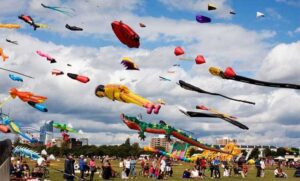
Lohri: The Lohri festival commemorates the end of the winter season. It is marked by the beating of Dhol and Nagadas and the singing of traditional Lohri melodies. Children from the neighborhood come to ask for goodies. The event is vibrant, and you cannot afford to miss the North Indian festival of Lohri. Special events are held in the homes of babies and couples. Lohri is the festival of happiness, you might get lucky witnessing it if you plan your trip in the Lohri month.
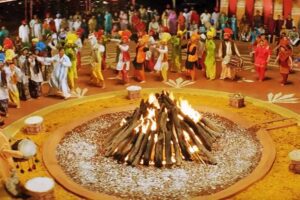
Pongal Harvest in India’s Southern Region:
The literal meaning of “Thai Pongal” is the harvest gratitude feast to the Sun God. Every year, it is observed between the 14th and 17th of January. Every day offers a new reason to rejoice. The first day is Bhogi, when old belongings are dumped, and new ones are celebrated. The primary event is Thai Pongal on the second day, followed by Maatu Pongal on the third day. Kaanum Pongal, held on the fourth day, brings the celebration to a satisfying conclusion.
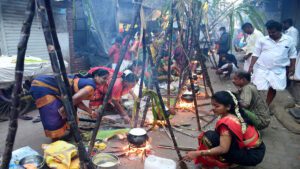
Vasant Panchami- Saraswati Festival:
This Hindu Spring festival is held in either January or February. The celebration honors the Hindu Goddess Saraswati. Saraswati Puja is celebrated on a grand scale in Bihar, West Bengal, Odisha, and Assam. Yellow is consumed and worn. Those in Rajasthan wear jasmine garlands, while people in Uttarakhand revere Lord Shiva and Parvati as the mother earth. Langar is a yellow holiday celebration held by Sikhs.

The Kumbh Mela
Have you ever seen a rush of thousands of people? That is Kumbh Mela for you. The festival, held every three years at Allahabad, Varanasi, Haridwar, and Ujjain, is one of the world’s largest pilgrim gatherings. Kumbh Mela, the world’s most spiritually enlightening festival, is a gathering place for devotees to take a holy dip in the river. Although it is celebrated every three years in specific locations, it is only observed once every twelve years in others, according to the Vikram Samvat calendar. Over the years, the number of people visiting the Maha Kumbh Mela has surpassed 30 million daily.
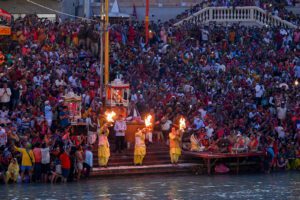
Losar is the Tibetan New Year:
It is primarily observed in Ladakh during the end of January or the beginning of February. The festival combines old traditions, theatre, and dances. The biggest event performed by the Ladakhi people is the “Metho” Ceremony, in which they hold burning torches and shout prayers as they march from street to street to ward off evil spirits.

Mahashivratri:
The magnificent feast commemorates the triumph of light over darkness and ignorance. People fast, put on new garments, and pray to Lord Shiva. God’s main temples are visited at Varanasi and Somnath. The Mandi fair is held in the Himachal Pradesh town of Mandi. In the Kashmiri and Himalayan areas, it is celebrated as the anniversary of God Shiva and Goddess Parvati. Many worshippers visit the Mahakaleshwar Temple in Ujjain.
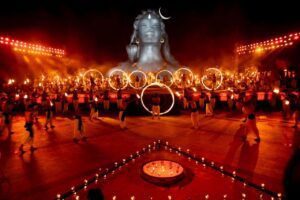
Goa’s Carnival:
The carnival lasts three to four days and provides plenty of entertainment. Many cultural groups participate in the massive march in Goa. Float parades are held in cities such as Panjim, Margao, Vasco da Gama, and Mapusa. Every year during the carnival season, Goa is soaked in joyful love with crazy music, color, cuisine, drinks, drums, and fun.
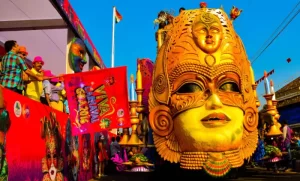
Wildlife:
This is the most fantastic time to see India’s diverse wildlife. Visiting National Parks and Wildlife Refuges is the finest choice for wildlife enthusiasts. It would help if you visited Jim Corbett National Park in Uttarakhand, Ranthambore National Park in Rajasthan, Bandipur National Park in Karnataka, Sariska National Park in Rajasthan, Kaziranga National Park in Assam, Sundarbans in West Bengal, and Gir in Gujarat.

Holi:
The festival of colors is the friendliest celebration in the country. Holika Dahan is held the night before Holi when all negatives are burned in a bonfire. On a primary day, individuals experiment with organic colors while dancing to music. The festival’s specialties include Gujiya, Mathri, and Thandai. In Mathura’s Bhaj area, “Lath Maar Holi” is celebrated. Women mocked their husbands’ shields with sticks. Offerings are offered to Kamadeva, the Indian God of Love, throughout the South. Dwarka, a Gujarat coastal city, celebrates the event at the Dwarkadheesh Temple. It is celebrated as a celebration of forgiveness and fresh starts. if you want to see how holi is really celebrated in the north, plan your trip accordingly and you’ll never regret it.

Kutch Festival, Rann Utsav
Visitors are warmly welcomed at the White Desert. The festival will run till February. The vibrant fairs on the river’s banks fill the souls with the spirit of celebration. Activities include horseback riding, camel riding, bird viewing, traditional dances, various games, gigantic chess, paramotoring, and net cricket. The event allows guests to learn about the rich traditions and hospitality of the Kutchi people. The combination of white sand and colorful décor is pleasing to the sight.

Wrap Up:
We strongly advise you to travel during these festivities. Because each event provides a different experience. The celebrations are spectacular, and the cultural integrity is outstanding! You will learn about all of the civilizations that are celebrated throughout India. It’s more thrilling than it appears. so, plan your trip according to the festivals to enjoy the maximum.



